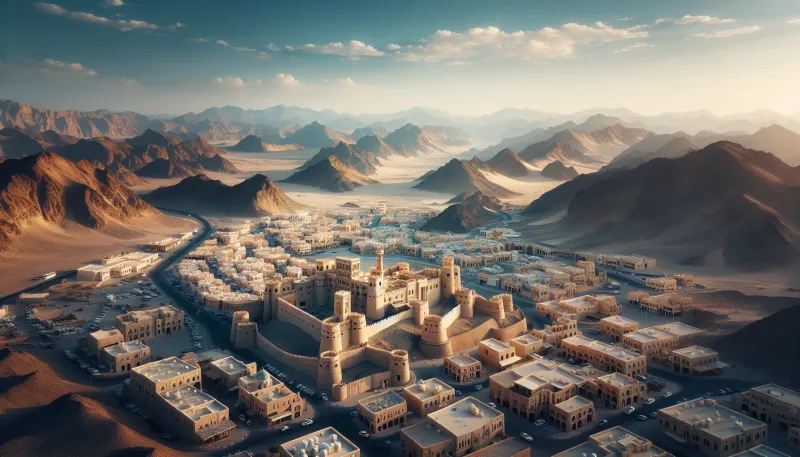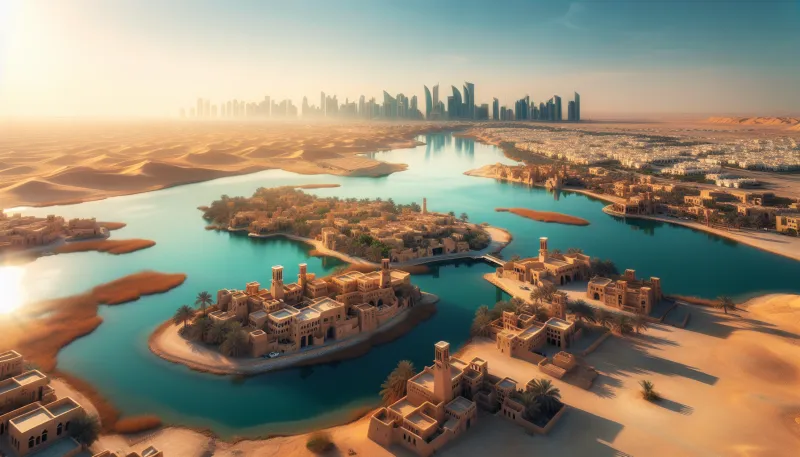
The fascinating history of Ras Al-Khaimah
Ras Al-Khaimah, one of the seven emirates that make up the United Arab Emirates, boasts a rich and diverse history. From ancient times to modern development, its strategic location and cultural heritage have played a significant role in shaping its identity. This article explores the key historical phases and events that have defined Ras Al-Khaimah over centuries.
- Early settlements and archaeological significance
- The role of Ras Al-Khaimah during the Persian and Islamic periods
- Portuguese arrival and fortification in the 16th century
- The rise of the Al Qasimi dynasty
- British maritime campaigns and treaties
- Economic shifts and the pearl industry
- Path toward joining the United Arab Emirates
- Modern development and cultural preservation
- Ras Al-Khaimah’s strategic importance in the Gulf
Early settlements and archaeological significance
Ras Al-Khaimah's history dates back thousands of years, with archaeological findings revealing human settlements from the Stone Age. Various sites, including shell middens and burial tombs, provide evidence of early civilizations that thrived in the area. These ancient communities were involved in fishing, trade, and agriculture, establishing Ras Al-Khaimah as a vital spot on the Arabian Peninsula.
The role of Ras Al-Khaimah during the Persian and Islamic periods
In the early centuries AD, Ras Al-Khaimah came under the influence of Persian empires and later the spread of Islam. The region's strategic coastal location attracted merchants and settlers. Islamic culture integrated with local traditions, and Ras Al-Khaimah became part of important trade networks extending across the Arabian Gulf.
Portuguese arrival and fortification in the 16th century
The 16th century saw European colonial powers eyeing control over the trade routes of the Gulf. Portuguese forces established forts along the coast, including in Ras Al-Khaimah, to dominate regional commerce. Their presence introduced new military architecture, such as coastal castles, marking an era of increased foreign intervention in the area.
The rise of the Al Qasimi dynasty
From the 18th century onwards, the Al Qasimi family emerged as a powerful ruling dynasty in Ras Al-Khaimah and Sharjah. They controlled local trade and maritime activities, often clashing with the British naval forces who labeled them as pirates to justify intervention. The Al Qasimi played a critical role in maintaining regional autonomy and shaping the emirate's political landscape.
British maritime campaigns and treaties
During the 19th century, the British launched multiple campaigns to suppress piracy along the Gulf coast, resulting in the signing of maritime treaties. The 1820 General Maritime Treaty forced the Al Qasimi to cease hostilities, leading to a period known as the Trucial States era. These agreements paved the way for British-protected status over Ras Al-Khaimah and neighboring emirates.
Economic shifts and the pearl industry
For much of its history, Ras Al-Khaimah's economy was heavily reliant on pearling, fishing, and trade. The pearl industry thrived until the early 20th century, contributing significantly to the local economy and social structure. The decline of natural pearls due to the introduction of cultured pearls and the Great Depression prompted economic changes in the region.
Path toward joining the United Arab Emirates
Following the discovery of oil and the desire for political stability, Ras Al-Khaimah joined the federation of the United Arab Emirates in 1972, shortly after the country's formation in 1971. Its inclusion completed the UAE's unity, allowing Ras Al-Khaimah to benefit from federal projects and development initiatives.
Modern development and cultural preservation
Today, Ras Al-Khaimah combines modern urban development with a commitment to preserving its rich cultural heritage. Investments in infrastructure, tourism, and industry coexist alongside archaeological preservation and traditional festivals. This balance allows the emirate to maintain its unique historical identity within a rapidly changing region.
Ras Al-Khaimah’s strategic importance in the Gulf
Historically and presently, Ras Al-Khaimah's location at the mouth of the Arabian Gulf has made it a strategic hub for trade, defense, and maritime activities. Its natural harbors and proximity to major shipping lanes continue to attract industries and investors, reinforcing its pivotal role in regional geopolitics and economic networks.
Real Estate Market Researcher in the UAE and Middle East



































